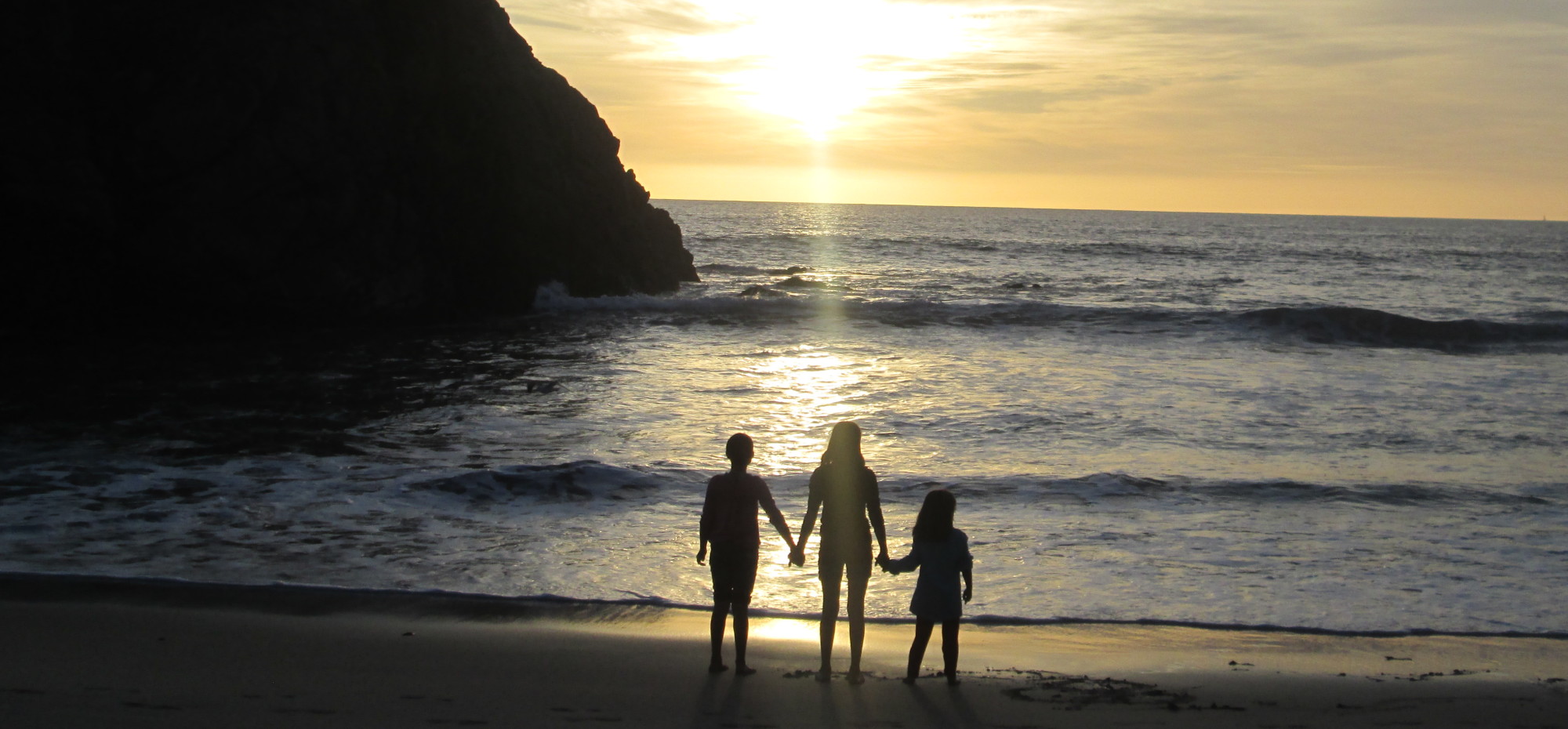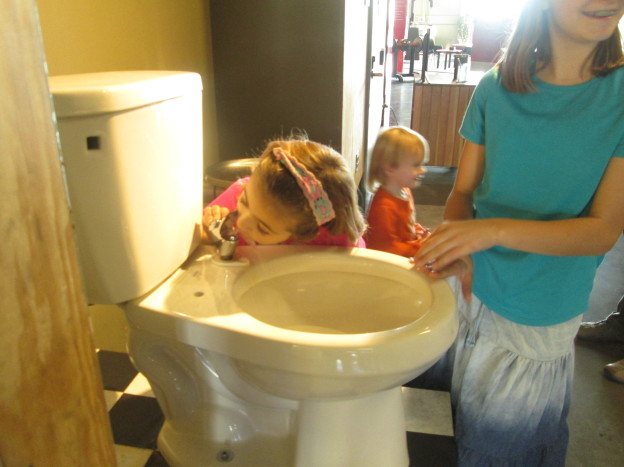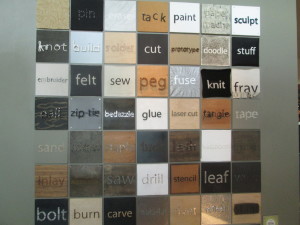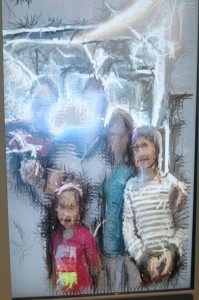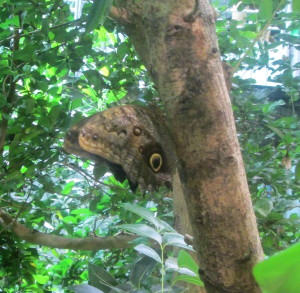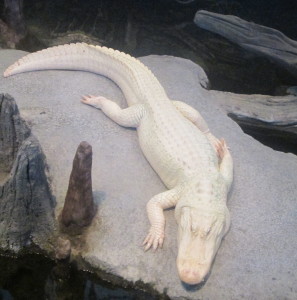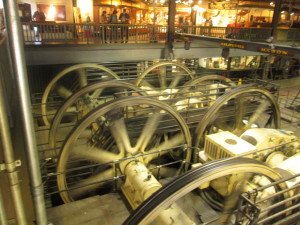…the life out of you, that is.
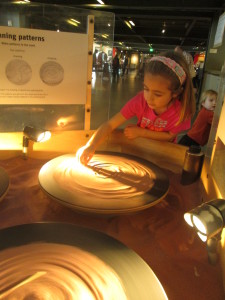
Sand art at the Exploratorium
We’re not really big museum people, generally. When I was doing a whirlwind tour of Europe during college with my friends Julie and Nancy, we visited a lot of museums. I don’t know why, really – we didn’t enjoy them all that much. In fact, we eventually devised a system where we rated various museums on their life-suck potential – as in, how fast they would just suck the life right out of you, leaving you staggering weakly around, with barely enough energy to get to the exit. And yet the next day there we would go again, marching glumly off to see 15th-century Hungarian equine portraiture or something.
(Sometimes it wasn’t our fault. One time we signed up for a day-long tour of microbreweries in Belgium. After we arrived and got on the bus, the tour guide cheerfully announced that they hadn’t had enough people sign up for any of the three tours they were offering – the aforementioned brewery tour, a tour of WWI historical sites, and some kind of medieval art tour – so they were consolidating them all and taking the whole group to a little of each. I can’t imagine anyone was very happy with this arrangement, but probably no one less so than us. I believe this was the beginning of our collective hatred of those Madonna-and-child paintings with the gold halos around Mary’s head.)
Luckily I’ve gotten past the idea that I must go to all these museums just because you’re supposed to. One of the benefits of going to Italy with the kids last year was that we felt no guilt about skipping the whole lot of them. Instead of queueing up to see David along with 20,000 other tourists, we were happily wandering around the city, looking at fountains and street performers and eating gelato.
There are exceptions, of course. I co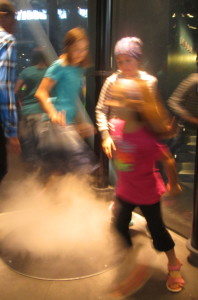 uld have spent all day wandering around the Metropolitan Museum of Art in New York City, for example. And there are plenty of quirky little museums out there that are entertaining simply because of their existence. My friend Ken and I once spent a happy afternoon perusing the many fascinating exhibits of the Museum of Medical Oddities in Washington, DC, which features such items as a giant hairball surgically removed from someone’s stomach. There’s nothing life-sucking about that. And of course, we’ll never forget the St. Louis City Museum, which is still my kids’ favorite place in the world. But overall I feel like museums have too much stuff and too many people, leading to sensory overload followed inevitably by life-suck.
uld have spent all day wandering around the Metropolitan Museum of Art in New York City, for example. And there are plenty of quirky little museums out there that are entertaining simply because of their existence. My friend Ken and I once spent a happy afternoon perusing the many fascinating exhibits of the Museum of Medical Oddities in Washington, DC, which features such items as a giant hairball surgically removed from someone’s stomach. There’s nothing life-sucking about that. And of course, we’ll never forget the St. Louis City Museum, which is still my kids’ favorite place in the world. But overall I feel like museums have too much stuff and too many people, leading to sensory overload followed inevitably by life-suck.
So, we’re particular about our museums. And the ones we visited here in San Francisco were all winners.
Zoe has already written about the Exploratorium. There was much that was cool about this place, but the thing I liked best was that you could really tell that the exhibits were put together by various scientists tinkering away in the central lab area with blow torches and hammers. They just had that kind of pieced-together-with-what-was-on-hand feel to them. The exhibits spanned a wide range of topics – from physics and chemistry to a big area about sociological research on sharing – but all were really well put together in a way that made you want to read the walls of text that accompanied each exhibit. Also, they had a drinking fountain coming out of a toilet. Zoe and Lanie tried it; the rest of us passed.
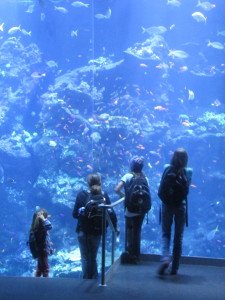
The California Academy of Sciences was more of a natural history museum and aquarium. We had about three hours here and wished it were longer – they had to kick us out at closing time. Among the exhibits were a room that you could go into to see what an earthquake felt like, and an albino alligator.
Finally, a hidden gem only a few blocks from our apartment – the Cable Car Museum. I have to admit that we only went to this place because it was close and it was free. However, it turned out to be so much cooler than I would have expected. “Museum” was a misnomer, really. Although it did have various exhibits on the history and mechanics of cable cars, the real highlight is that the building houses the powerhouse of all four San Francisco cable car lines. The huge open center of the room was all the exposed machinery that keeps the cable cars running along under the streets. You could watch the enormous wheels turning and see the cables disappearing in various directions as the four lines dispersed across the city under the floor. It was loud and a little smelly and fascinating – and we were still full of energy when we headed, a little reluctantly, back out the door.
